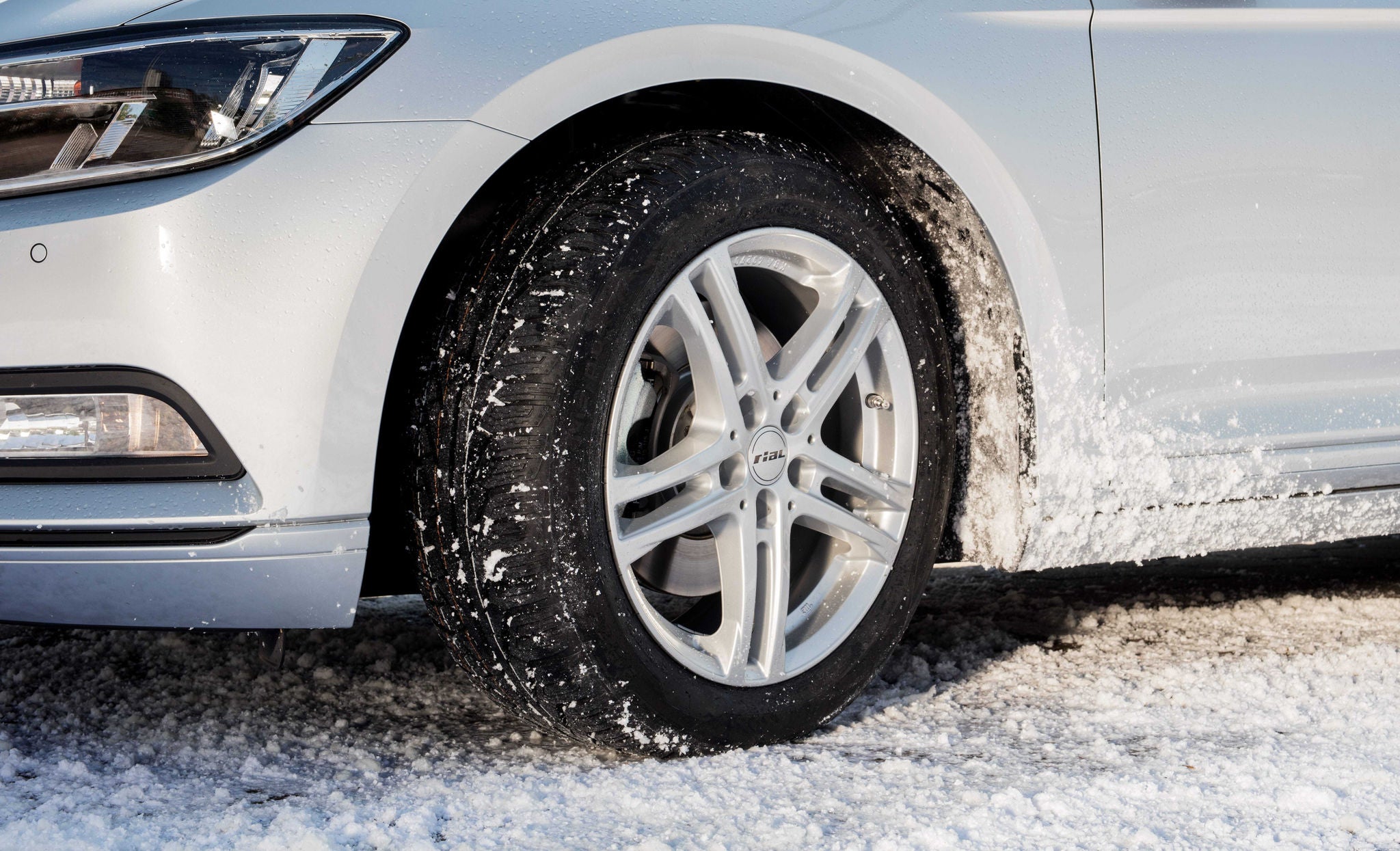
There’s more to tyre design than you might think. Engineers need to consider safety, fuel efficiency, wear and tear and performance - while being fully aware of all the forces that affect handling.

What is cornering force?
One important tyre dynamic is cornering force. As its name suggests, cornering force is the lateral force that’s generated by your tyres every time they turn. This force is equivalent to the centrifugal force that would, if unchallenged, send the vehicle off course. The cornering force counters the centrifugal force, giving the tyres the power to grip the road through the turn.
You will notice that tyres change shape when cornering. This distortion of the tread blocks happens when the steering angle generates the right amount of front and rear lateral force. Cornering force to the left will generate a tyre slip to the right.
What affects cornering force?
- Speed: The higher the speed, the higher the cornering force. That’s why it’s important to fit tyres with the speed rating recommended by your vehicle's manufacturer.
- Weight: The higher the weight, the higher the cornering force. Make sure you don’t overload your vehicle and have tyres with the proper load range or load index. See your vehicle manual for more information.
- Road conditions: Cornering force is affected by bad weather. Snow and ice, in particular, can cause tyres to slide when turning – especially when driven at speed. All-weather and winter tyres are designed to reduce this risk.
- Tyre width, size and pressure: These are clearly related to the contact area between tyre tread and the road. The bigger the contact area, the more cornering force the tyres can provide.
What tyres have the best cornering force?
Tyres with a low-profile design and a sticky tread compound have the best cornering force. They’re often described by drivers as being responsive, making them ideal for perfomance cars such as sport cars and sedans. Their tread patterns grip the road tightly, particularly during high-speed cornering manouevres.
What is the safest way to drive round corners?
The faster you take a corner, the more pressure you put on your tyres. If you push them too far, you will skid and lose control. As well as slowing down, you need to take bends as smoothly as possible. One way to do this is to ‘straighten’ the bend slightly using the full width of your lane to create the widest possible arc. However, it is important that you don’t cross the central line unless it’s legal to do so and you have a full view of what’s coming towards you.
As you approach the bend, look in your rear-view mirror and slow down to a safe speed. While your tyres are still facing straight ahead, change down to a lower gear. This gives you the option to accelerate as you leave the bend.
Steer smoothly into the curve and gently put your foot on the accelerator as you pass the apex of the curve. Avoid braking on a bend if at all possible. Your tyres are already dealing with numerous forces when cornering and braking can upset the balance, causing you to skid.
Related Topics
-
 2023/03/31Changing and rotating tyres: Read on to find out why tyre rotation is important. And whether the good tyres should go on the front or rear.Good tyres on front or rearRead more
2023/03/31Changing and rotating tyres: Read on to find out why tyre rotation is important. And whether the good tyres should go on the front or rear.Good tyres on front or rearRead more -
 2023/03/31Do you want to calculate the tyre size of your tyres? We explain the formula – find out more from Uniroyal. Find out more now!Rolling circumferenceRead more
2023/03/31Do you want to calculate the tyre size of your tyres? We explain the formula – find out more from Uniroyal. Find out more now!Rolling circumferenceRead more -
 2023/03/31Want to find out more about the tyre load index of your tyres? Calculate the maximum load capacity and find out what is a load index on a tyre. Find out now!Load capacity indexRead more
2023/03/31Want to find out more about the tyre load index of your tyres? Calculate the maximum load capacity and find out what is a load index on a tyre. Find out now!Load capacity indexRead more